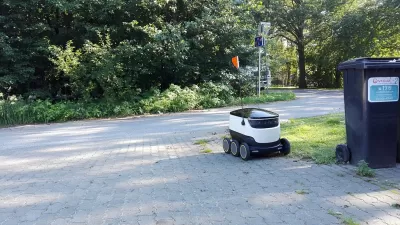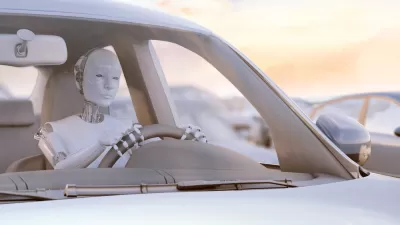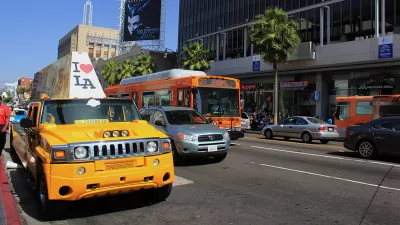While some may be disappointed by how cities aren't yet swarming with robots and automated cars, Frank Swain writes that it's a matter of when we humans can tailor our landscapes to enable the new technology.
"If automated cars are really on the horizon, then we will have to invest heavily in infrastructure to make the roads robot-friendly. This could mean radio beacons at pedestrian crossings, or road markings inlaid with inductive loops so that cars can sense where to stop at complicated junctions. We'd also need signs to warn drivers as they leave a road that is configured to support automated cars.
On the street, shops and businesses might supplement eye-catching signs with ones suited to electronic optics. In Korea, commuters can now shop at virtual supermarkets by scanning murals of groceries plastered across metro platforms. The advent of inexpensive robotic systems might even herald a return to the old system of grocery shopping, where customers presented a list of goods for the store assistant to fetch."
FULL STORY: The Future Is Machine-Readable

Planetizen Federal Action Tracker
A weekly monitor of how Trump’s orders and actions are impacting planners and planning in America.

Chicago’s Ghost Rails
Just beneath the surface of the modern city lie the remnants of its expansive early 20th-century streetcar system.

San Antonio and Austin are Fusing Into one Massive Megaregion
The region spanning the two central Texas cities is growing fast, posing challenges for local infrastructure and water supplies.

Since Zion's Shuttles Went Electric “The Smog is Gone”
Visitors to Zion National Park can enjoy the canyon via the nation’s first fully electric park shuttle system.

Trump Distributing DOT Safety Funds at 1/10 Rate of Biden
Funds for Safe Streets and other transportation safety and equity programs are being held up by administrative reviews and conflicts with the Trump administration’s priorities.

German Cities Subsidize Taxis for Women Amid Wave of Violence
Free or low-cost taxi rides can help women navigate cities more safely, but critics say the programs don't address the root causes of violence against women.
Urban Design for Planners 1: Software Tools
This six-course series explores essential urban design concepts using open source software and equips planners with the tools they need to participate fully in the urban design process.
Planning for Universal Design
Learn the tools for implementing Universal Design in planning regulations.
planning NEXT
Appalachian Highlands Housing Partners
Mpact (founded as Rail~Volution)
City of Camden Redevelopment Agency
City of Astoria
City of Portland
City of Laramie





























